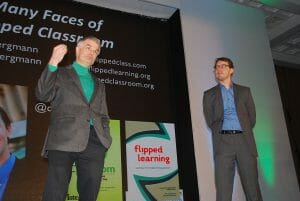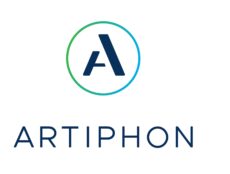
Articles
Industry News
A Coalition Is Creating International Standards for Flipped Learning
By Henry Kronk
March 05, 2018
One of the most popular new developments in teaching strategy — flipped learning — has grabbed the attention of educators around the world. It isn’t too difficult to describe it with broad strokes. The pedagogy involves phasing out the lecture mode. Instead of learning from their teachers during class time, students are asked to master new material on their own. Class is then spent presenting the information, mastering it with group work, and performing other collaborative projects that often places an emphasis on emotional learning and social skills.
But in practice, flipped learning can take all manner of different forms. What’s more, it’s one of the most popular subjects for new research. Yet, it’s difficult for many working educators to both stay up to date and do their job.
Enter the Flipped Learning Global Initiative
In answer, a coalition has formed to act as an international flipped learning body. The Flipped Learning Global Initiative (FLGI) seeks to do three things: keep their constituents up to date with the latest research, provide a guide for the evolving best practices, and identify emerging technology that can be used to supplement FL in and out of the classroom.
FLGI launched in June of 2016 and, as of this month, they have decided on the leadership of their Global Standards Community. The chairpeople are comprised of educators from around the world. The Global Standards Project aims to provide a current set of best practices for educators looking to implement flipped learning.

“I’ve traveled over 600,000 miles on six continents facilitating training on the principles and best practices of Flipped Learning,” said Jon Bergmann, Chief Academic Officer and early Flipped Learning pioneer in a release. “I’ve found that most flipped educators and trainers are practicing in silos. The overwhelming majority of even the best practitioners are unaware that global best practices even exist. It’s disquieting to see flipped educators learning outdated practices. Many are being taught Flipped Learning in a vacuum by people who learned and practiced in a vacuum, so they just don’t know that there are more advanced practices.”
The Need for a Set of Best Practices
According to the most recent data compiled by the FLGI, as much as 80% of educators using the approach are 3-5 years behind what the body agrees are best practices. Jon Bergmann believes that educators are hungry for a flipped learning guide from an authoritative body.
“Perhaps the need for a global initiative on standards for Flipped Learning is best underscored by the response we immediately received,” Bergmann said in a release. “Within a few days, Flipped Learning practitioners from K12 – higher Ed, from New Zealand, Indonesia, Italy, Australia, Taiwan, Spain, Argentina, Canada, Malaysia, Belgium, Hong Kong, and the United States answered the call to participate.”
A select group has already created an acting set of best practices. But the newly formed Global Standards Community will undergo a period of research and expand on the current document.
“We’re seeing at least four areas across the global Flipped Learning community where there is a vacuum that begs for some sort of framework, guidance, or standardization,” said Errol St. Clair Smith, Director of Global Development at the Flipped Learning Global Initiative. “Flipped Learning practitioners are telling us we need a common terminology, best practices for integrating research and practice, cultural responsive FL strategies, and to identify global pitfalls and common mistakes.”
The Global Standards Community is actively seeking the input from delegates around the world. To participate, give input, and debate you simply need to be a registered delegate. Interested educators can apply to become a delegate here.









[…] Read the full story by eLearningInside News […]